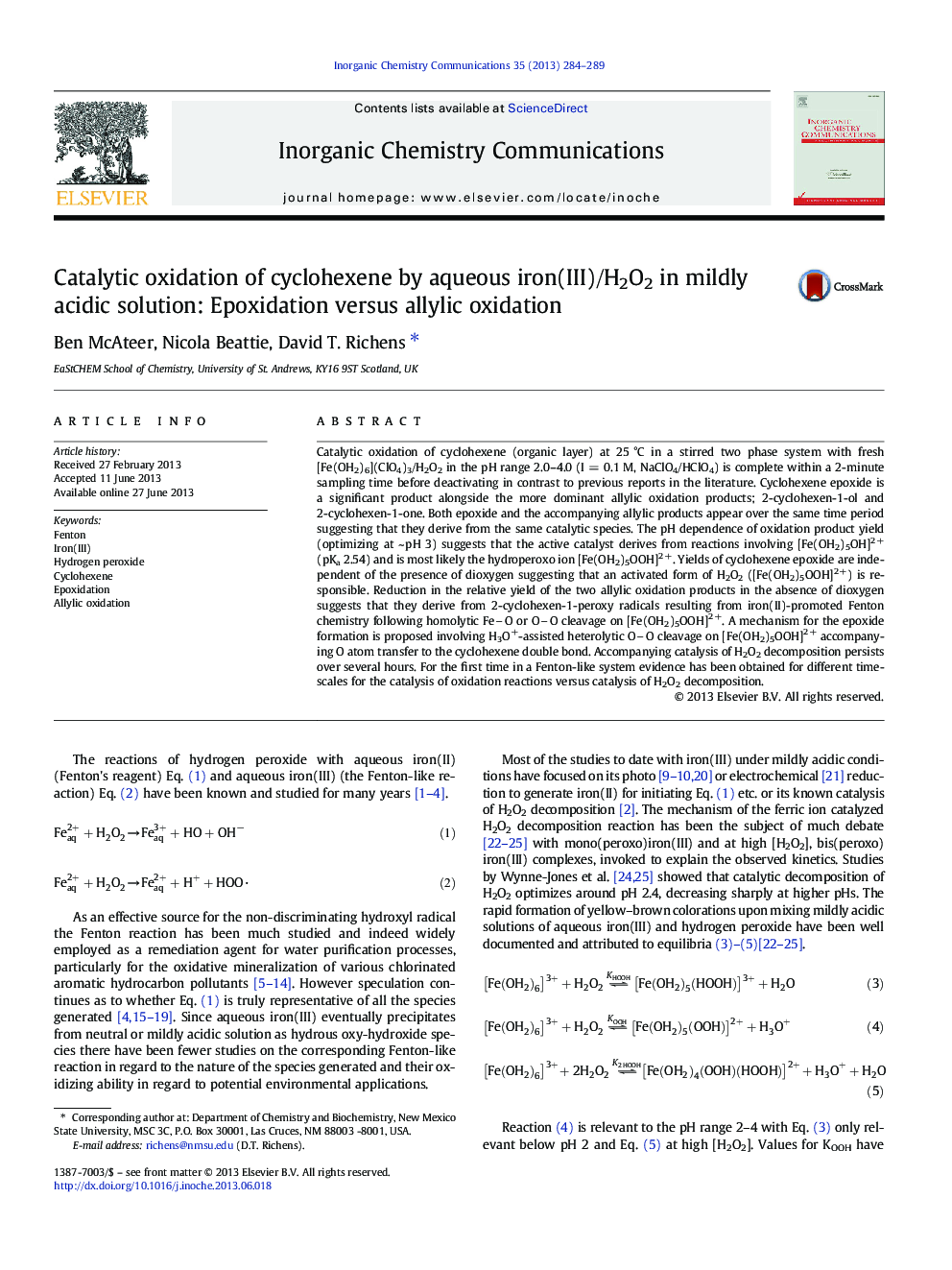| کد مقاله | کد نشریه | سال انتشار | مقاله انگلیسی | نسخه تمام متن |
|---|---|---|---|---|
| 1303878 | 1498955 | 2013 | 6 صفحه PDF | دانلود رایگان |

• Catalysis of oxidation is fast (< 2 min) compared with H2O2 decomposition (hours).
• Catalysis of oxidation quickly deactivates after the initial few minutes.
• The optimum pH of ~ 3 suggests that the active iron catalyst is [Fe(OH2)5OOH]2 +.
• Epoxide yield is independent of O2 suggesting formation from activated H2O2.
• Allylic product yield decreases without O2 suggesting classic Fenton chemistry.
Catalytic oxidation of cyclohexene (organic layer) at 25 °C in a stirred two phase system with fresh [Fe(OH2)6](ClO4)3/H2O2 in the pH range 2.0–4.0 (I = 0.1 M, NaClO4/HClO4) is complete within a 2-minute sampling time before deactivating in contrast to previous reports in the literature. Cyclohexene epoxide is a significant product alongside the more dominant allylic oxidation products; 2-cyclohexen-1-ol and 2-cyclohexen-1-one. Both epoxide and the accompanying allylic products appear over the same time period suggesting that they derive from the same catalytic species. The pH dependence of oxidation product yield (optimizing at ~ pH 3) suggests that the active catalyst derives from reactions involving [Fe(OH2)5OH]2 + (pKa 2.54) and is most likely the hydroperoxo ion [Fe(OH2)5OOH]2 +. Yields of cyclohexene epoxide are independent of the presence of dioxygen suggesting that an activated form of H2O2 ([Fe(OH2)5OOH]2 +) is responsible. Reduction in the relative yield of the two allylic oxidation products in the absence of dioxygen suggests that they derive from 2-cyclohexen-1-peroxy radicals resulting from iron(II)-promoted Fenton chemistry following homolytic FeO or OO cleavage on [Fe(OH2)5OOH]2 +. A mechanism for the epoxide formation is proposed involving H3O+-assisted heterolytic OO cleavage on [Fe(OH2)5OOH]2 + accompanying O atom transfer to the cyclohexene double bond. Accompanying catalysis of H2O2 decomposition persists over several hours. For the first time in a Fenton-like system evidence has been obtained for different timescales for the catalysis of oxidation reactions versus catalysis of H2O2 decomposition.
A short lived iron(III)-peroxo species capable of catalyzing epoxidation and allylic oxidation on cyclohexene is formed within 2 min following addition of fresh solutions of [Fe(OH2)6]3 + to a 50-fold excess of H2O2 in mildly acidic solution (pH ~ 3). Accompanying catalysis of H2O2 decomposition is slower, persisting over several hours.Figure optionsDownload as PowerPoint slide
Journal: Inorganic Chemistry Communications - Volume 35, September 2013, Pages 284–289